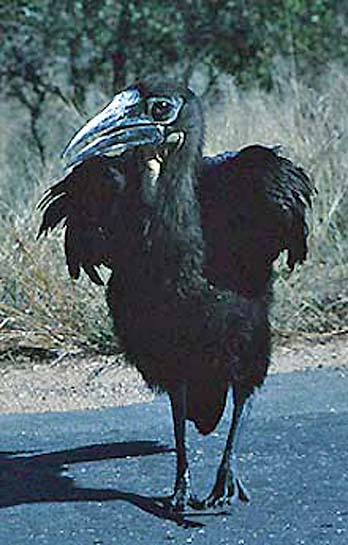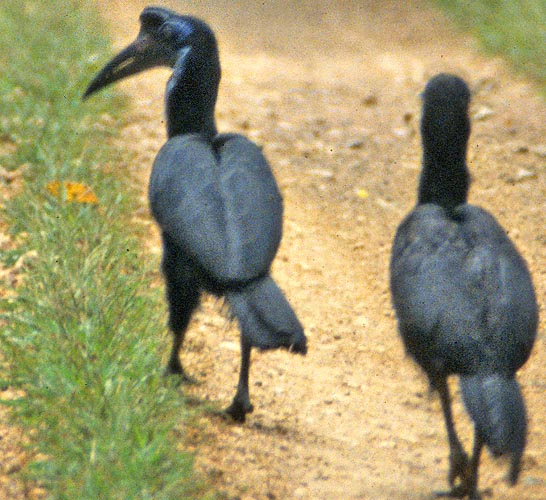
a web page by Don Roberson |
GROUND-HORNBILLS Bucorvidae |
|
The two species of ground-hornbill are omnivorous, spending much of the day foraging on the ground for lizards, snakes, and a wide variety of live prey, plus fruits. They nest in crevices, but the female is not sealed-in like the typical hornbills. |
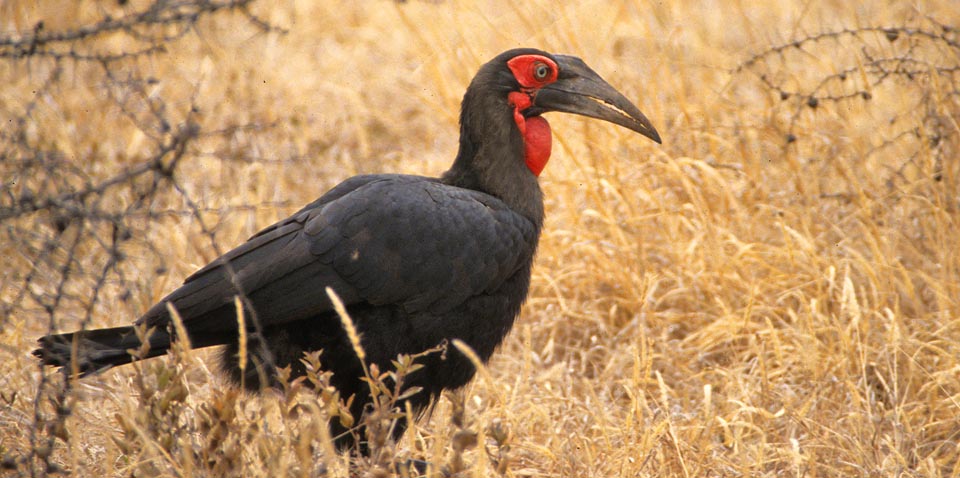 |
| Traditionally, the Ground-Hornbills are considered just a subfamily of the typical Hornbills [Bucerotidae]. However, unlike all other hornbills, ground-hornbills do not seal the female inside a nest cavity, they walk instead of hop, they lack a carotid artery (unique among all birds), and they have 15 instead of 14 neck vertebrae (Kemp 1995). Even Alan Kemp himself appears to have changed his mind recently about family status for these birds. The Birds of Africa series followed Kemp & Crowe (1985) by including them within the Bucerotidae but Kemp (1995), referring to a cladistic figure derived from his prior work, stated that the “two species of Bucorvus emerge as the earliest surviving offshoot within the order, sufficiently distinct and long separated to be placed in their own family, the Bucorvidae. They were already evident as a mid-Miocene fossil from Morocco some 15 million years ago.” By the time he wrote the chapter in Handbook of the Birds of the World (Kemp 2001) he was firmly in the pro-Family camp, stating that "modern molecular studies suggest that the difference between the [ground-hornbills and hornbills] are so profound that each should be elevated to the status of a full family." |
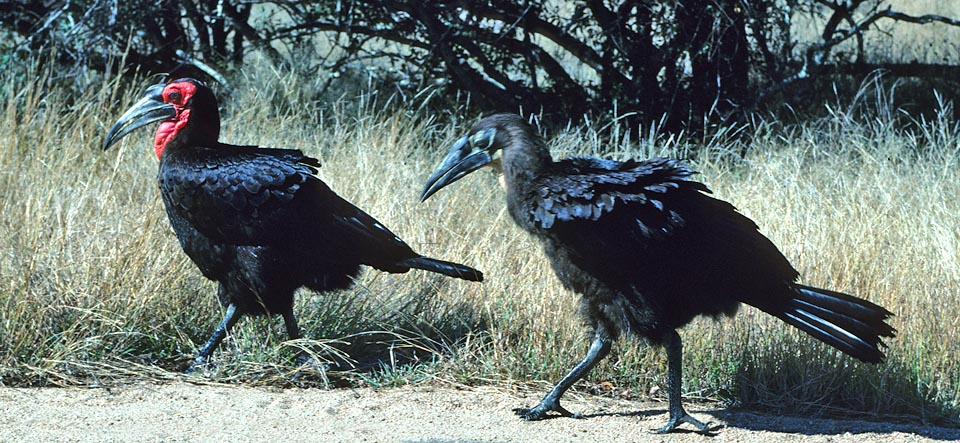 |
The decision to separate the Ground-Hornbills into a separate Family makes eminent sense to me (from a field ornithologists’ perspective) because of the profound behavioral and breeding biology differences between them and the mostly tree-loving “typical” hornbills. Ground-hornbills were of ancient lineage. If you have any doubt that birds are descended from dinosaurs, check out a young ground-hornbill (above, following the adult, and right) and become a believer! "Ontogeny recapitulates phylogeny" indeed. Yes, I know this a disproven biological hypothesis [to wit, that in developing from embryo to adult, animals go through stages resembling or representing successive stages in the evolution of their remote ancestors] .... but still: Look at that face — do you not see the Velociraptor there? Viseshakaul et al. (2011) undertook an extensive molecular evaluation of hornbill evolution. They found that the ancestor of ground-hornbill diverged about 54 million years ago as the earliest lineage. So these are very much "ancient" birds and well deserving of family status.
|
Southern Ground-Hornbill (photos above) ranges widely through east and south Africa. The second species is Abyssinian Ground-Hornbill (left), which inhabits the arid Sahel region on the southern edge of the Sahara Desert, east to Uganda (where this pair was blocking our route). Note the blue neck and eye wattle on the front left bird (a female) that separate it easy from the red-wattled southern species (above). Male Abyssinian has a blue eye wattle but red neck wattle. The neck wattles on both species can be inflated and are used to make booming or grunting sounds, often just before dawn. That of Southern Ground-Hornbill can be called "lion-like," while the higher-pitched call of Abyssinian recalls the grunt of a leopard.
|
Photos: Most of the photos of Southern Ground-Hornbill Bucorvus leadbeateri (e.g., the adult and juv, the head close-up) were taken in Kruger NP, South Africa, in July 2006. The additional photo of that species (2d on the page) was in Tarangire NP, Tanzania, on 6 Aug 2002. The pair of Abyssinian Ground-Hornbill B. abyssinicus were blocking the road to Murchison Falls Nat'l Park, Uganda, in July 2002. Photos © Don Roberson; all rights reserved. Family book:
Literature cited:
|
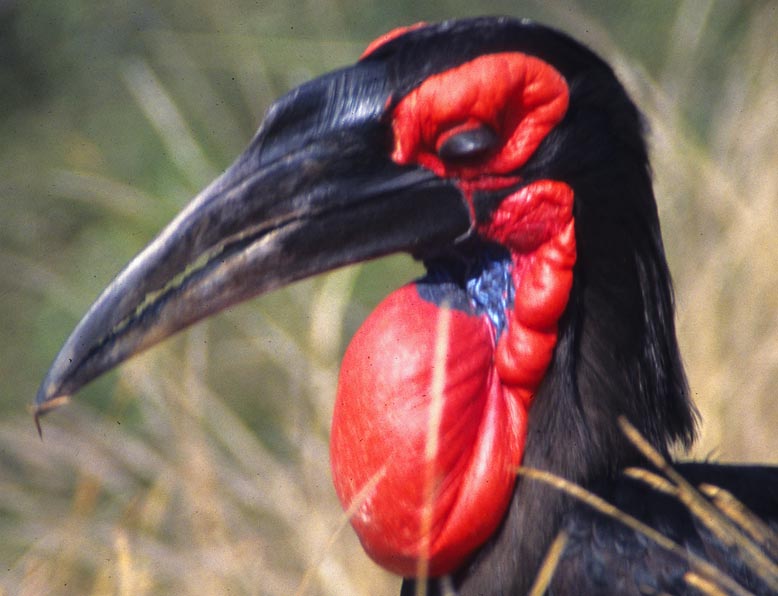 Ground-Hornbills are huge prehistoric-appearing birds of open grasslands and savanna in sub-Saharan Africa. Watching a Southern Ground-Hornbill foraging at roadside in Kruger NP, South Africa (left), or in a Tanzania reserve (below), is a highlight of any visit. Note the dexterity with which the huge adult picks up a tiny insect (left).
Ground-Hornbills are huge prehistoric-appearing birds of open grasslands and savanna in sub-Saharan Africa. Watching a Southern Ground-Hornbill foraging at roadside in Kruger NP, South Africa (left), or in a Tanzania reserve (below), is a highlight of any visit. Note the dexterity with which the huge adult picks up a tiny insect (left).